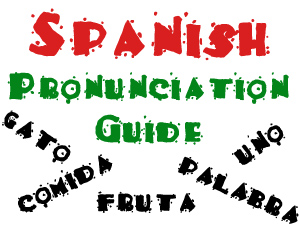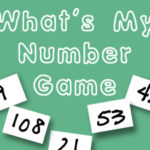
One of the things I love about Spanish is that it’s so easy to pronounce. Unlike English, with all of its exceptions to rules, Spanish is very straight forward and phonetic. Once you learn the rules for Spanish pronunciation, you can say pretty much anything in the language.
Below you’ll find a Spanish pronunciation guide. With it, you and your children can learn to enunciate Spanish words properly in a relatively short time.
You’ll want to spend some time practicing these rules with some simple words and phrases. That will help you gain confidence with your pronunciation. If you’re using a purchased Spanish curriculum, you can use these rules with it. Otherwise, you can find some resources that will help you teach Spanish to your children on these sites.
Have fun learning Spanish!
Spanish Pronunciation Guide
Let’s begin with the sound that each letter makes.
a – Makes the “ah” sound as the a does in the word “mama”
b – Sounds like the b in English
c – Makes the hard “k” sound before the letters a, o, and u
Makes the soft “s” sound before the letters e and i
ch – Sounds like the ch in English
d – Sounds like the d in English only a little softer, almost like the “th” sound
e – Makes the “ay” sound as e does in the word “hey”
f – Sounds like the f in English
g – Makes the hard “g” sound as in “goat” before the letters a, o, and u
Makes the “h” sound as in “hat” before the letters e and i
h – The h is silent in Spanish
i – Makes the “ee” sound as the i does in the word “machine”
j – Sounds like a guttural “h”
k – Sounds like the k in English
l – Sounds like the l in English
ll – sounds like the y in English
m – Sounds like the m in English
n – Sounds like the n in English
ñ – Makes the “ny” sound as in the word “canyon”
o – Makes the “oh” sound as the o does in the word “doe”
p – Sounds like the p in English
q – Sounds like the k in English (the u is silent)
r – The r is flipped in Spanish
rr – The double r is trilled in Spanish
s – Sounds like the s in English
t – Sounds like the t in English
u – Makes the “oo” sound as the u does in “blue”
v – Makes a sound that is a blend of the b and v in English
w – Sounds like the w in English
x – Usually makes the “ks” sound as it does in English
Can sometimes make the guttural “h” sound in some proper nouns and words
derived from them (i.e. México and mexicano)
y – As a consonant, it sounds like the y in English as in “yellow”
When it is by itself, it makes the “ee” sound as in the word “bee”
z – Sounds like the s in English (never a “zz” sound)
Now let’s look at how syllables are stressed in Spanish. By “stress,” I mean that one syllable is typically louder than the others. You have to be careful with this, otherwise you’ll end up calling someone’s father a potato. That’s because the meaning of some words change when the stress is placed on a different syllable.
So here are the rules for stress in Spanish that will keep you from offending someone and causing undo stress in your life. (Pun intended)
1. When a word ends in the letters n, s, or a vowel, the stress lands on the second to last syllable. Here are some examples with the stressed syllable in capital letters for your benefit:
CO-men: they eat
LU-nes: Monday
do-MIN-go: Sunday
mar-i-PO-sa: butterfly
2. Words that do NOT end in n, s, or a vowel have the stress placed on the last syllable. Here are some examples:
pa-PEL: paper
be-BER: to drink
fe-li-ci-DAD: happiness
hos-pi-TAL: hospital
3. An accent mark is used for exceptions to the two rules above. In this case, the stress is placed on the accented syllable. Some examples include:
le-ÓN: lion
LÁ-piz: pencil
can-ci-ÓN: song
mi-ÉR-co-les: Wednesday
Here are some cases where the stress (the good kind) can make a difference:
papa: potato
papá: father
hablo: I speak
habló: he, she or you (formal) spoke
estas: these
estás: you (familiar) are
So just be a little cautious in your pronunciation of Spanish and you should have no problem getting your point across with a native speaker.
I have some Spanish printables here including posters, activities, and games that you might find helpful in learning and teaching Spanish. They come with handy pronunciation guides for beginning Spanish speakers.






